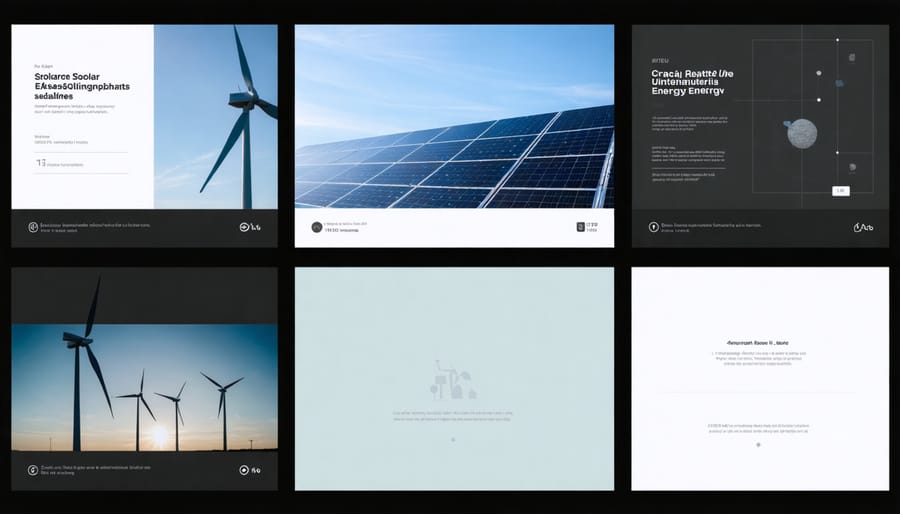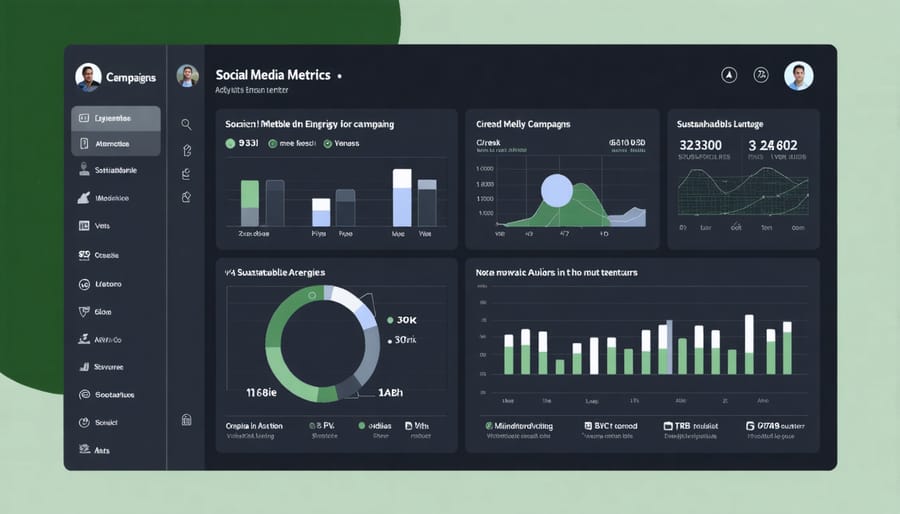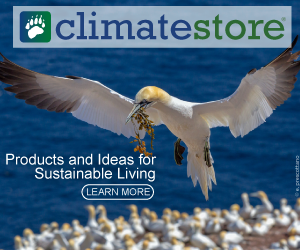Social Media Supercharges Sustainable Energy: Proven Strategies That Drive Real Change
Transform sustainable energy initiatives into compelling social media narratives through professional social media marketing that resonates with today’s environmentally conscious audiences. The convergence of renewable energy innovation and digital communication presents an unprecedented opportunity to accelerate the global transition to clean energy through strategic storytelling and community engagement.
Leading organizations harness social media’s power to showcase technological breakthroughs, demonstrate real-world impact, and build passionate communities around sustainable energy solutions. From Tesla’s viral product launches to Ørsted’s award-winning digital campaigns, successful brands understand that effective social media strategy goes beyond promotional content to create meaningful dialogue about our energy future.
By combining data-driven insights with authentic storytelling, organizations can transform complex energy concepts into engaging content that educates, inspires, and mobilizes audiences. Whether highlighting local solar installations or explaining breakthrough battery technologies, social platforms offer unique opportunities to demonstrate sustainable energy’s tangible benefits while building trust through transparency and consistent engagement.
This strategic approach to sustainable energy communication requires careful consideration of platform-specific dynamics, audience preferences, and measurable objectives. Success demands more than just regular posting – it requires a sophisticated understanding of how to leverage each channel’s unique capabilities to advance clean energy adoption while maintaining scientific accuracy and professional credibility.
Building Your Sustainable Energy Brand Voice
Crafting Your Green Energy Narrative
In the realm of sustainable energy, your narrative is more than just facts and figures – it’s the bridge between technical innovation and human impact. Begin by identifying your core message: what unique value does your green energy initiative bring to communities and the environment? Focus on universal themes like environmental stewardship, economic opportunity, and technological progress.
Create a narrative arc that combines data-driven insights with emotional resonance. Share stories of successful implementations, highlighting both environmental benefits and tangible community outcomes. For instance, pair statistics about carbon reduction with testimonials from local businesses thriving through renewable energy adoption.
When crafting content for different audiences, layer your messaging thoughtfully. For technical audiences, lead with performance metrics and innovation details, then expand into broader implications. For general audiences, start with relatable benefits – lower energy costs, cleaner air, job creation – before introducing supporting technical elements.
Visual storytelling is crucial. Use infographics to simplify complex data, time-lapse videos to showcase installation progress, and before-and-after comparisons to demonstrate impact. Remember to maintain authenticity by acknowledging challenges while emphasizing solutions and progress.
Incorporate diverse voices from your organization – engineers can explain innovations, community managers can share impact stories, and leadership can articulate the vision. This multi-perspective approach creates a rich, engaging narrative that resonates across your audience spectrum.
Visual Communication Strategies
In today’s digital landscape, effective visual communication is crucial for conveying complex sustainable energy concepts to diverse audiences. Successful visual strategies combine data visualization, infographics, and compelling imagery to break down technical information into digestible content.
High-impact visuals should prioritize before-and-after comparisons, real-world implementation examples, and clear statistical representations. Utilize color psychology effectively – greens and blues for environmental themes, warm colors for energy concepts – while maintaining brand consistency. Incorporate motion graphics and short-form videos to demonstrate energy systems in action, making complex technologies more approachable.
Key visual elements should include:
– Custom infographics highlighting energy efficiency metrics
– Professional photographs of renewable energy installations
– Interactive charts showing cost savings and environmental impact
– Behind-the-scenes footage of sustainable technology implementation
– Animated explanations of energy processes
Ensure all visual content is optimized for mobile viewing and includes alt text for accessibility. When presenting data, focus on creating simple, clean designs that emphasize key messages without overwhelming viewers. Supplement visuals with brief, impactful captions that reinforce your message and encourage sharing.
Remember to maintain consistent branding elements across all visual content while adapting presentation styles to specific platform requirements, whether it’s Instagram’s square format or LinkedIn’s professional aesthetic.


Platform-Specific Content Strategies
LinkedIn: Professional Engagement
LinkedIn stands as the premier platform for sustainable energy professionals to build meaningful industry connections and showcase thought leadership. To maximize your organization’s impact, focus on creating and sharing detailed case studies of successful renewable energy projects, complete with measurable outcomes and lessons learned. These posts typically generate higher engagement rates among decision-makers and industry experts.
Engage regularly with industry-specific groups and participate in relevant discussions about renewable energy innovations, policy developments, and market trends. Share insights from your organization’s sustainability initiatives while maintaining a balance between promotional content and valuable industry perspectives.
Consider implementing a weekly content calendar that includes:
– Technical insights from your engineering team
– Updates on your organization’s renewable energy milestones
– Analysis of industry reports and trends
– Behind-the-scenes looks at sustainable energy projects
– Employee spotlight stories highlighting expertise in clean energy
Leverage LinkedIn’s polling feature to gather industry opinions on emerging technologies and sustainability challenges. This not only increases engagement but provides valuable market insights. Additionally, encourage your technical experts and leadership team to publish long-form articles about industry challenges and solutions, positioning them as thought leaders in the sustainable energy sector.
Remember to use relevant hashtags like #RenewableEnergy, #CleanTech, and #SustainableInnovation to increase visibility within the professional community. Engage with comments promptly and foster meaningful discussions that demonstrate your organization’s expertise and commitment to sustainable energy solutions.
Twitter: Real-Time Energy Updates
Twitter’s real-time nature makes it an invaluable platform for sustainable energy organizations to share breaking news, industry developments, and immediate updates on renewable energy projects. With its fast-paced environment, organizations can effectively communicate project milestones, policy changes, and technological breakthroughs to engaged followers.
Successful sustainable energy Twitter strategies often incorporate live-tweeting from industry conferences, sharing infographics about energy statistics, and posting updates about local renewable energy installations. For example, the International Renewable Energy Agency (IRENA) regularly shares bite-sized data visualizations that make complex energy trends accessible to their 158,000+ followers.
To maximize engagement, organizations should leverage Twitter’s unique features like polls to gauge public opinion on energy initiatives, threads to break down complex topics, and Twitter Spaces to host live discussions with industry experts. Hashtags like #CleanEnergy, #RenewableEnergy, and #EnergyTransition help increase visibility and connect with relevant audiences.
Community engagement thrives through consistent interaction with followers, retweeting relevant content from industry partners, and participating in Twitter chats focused on sustainability topics. Tesla’s approach of combining project announcements with real-world impact stories demonstrates how to build a compelling narrative around sustainable energy innovations.
Remember to maintain a balanced posting schedule, mixing scheduled content with spontaneous updates about industry developments. This approach helps maintain steady engagement while staying relevant in the fast-moving energy sector.
Instagram: Visual Impact
Instagram’s visual-first platform offers unique opportunities for sustainable energy organizations to showcase their impact through compelling imagery and storytelling. Success on this platform requires a strategic blend of aesthetic appeal and educational content that resonates with both industry professionals and the broader public.
High-quality photographs of solar installations, wind farms, and energy-efficient technologies can demonstrate the scale and beauty of renewable energy infrastructure. Time-lapse videos of construction projects, drone footage of facilities, and before-and-after comparisons effectively illustrate the transformation toward sustainable solutions.
Infographics play a crucial role in simplifying complex data. Share visually appealing statistics about carbon reduction, energy savings, and environmental impact using Instagram’s carousel feature. This format allows for detailed information presentation while maintaining visual engagement.
Behind-the-scenes content humanizes sustainable energy initiatives. Feature engineers, technicians, and community members involved in projects. Share stories of local impact through Instagram Reels, highlighting how sustainable energy solutions transform communities.
Leverage Instagram Stories for real-time updates on projects, industry events, and educational content. Use interactive features like polls and questions to boost engagement and gather audience insights. Create highlight collections for different project categories, making it easy for followers to explore specific areas of interest.
Remember to maintain consistent visual branding through color schemes, filters, and graphic elements that reflect your organization’s professional identity while making sustainable energy solutions appear accessible and inspiring.
Community Building and Engagement

Hashtag Strategies
Strategic hashtag usage in sustainable energy communication requires a balanced approach combining industry-specific and trending tags. Primary hashtags like #SustainableEnergy, #CleanEnergy, and #RenewableEnergy form the foundation of any post, while secondary tags like #EnergyTransition and #CleanTech help broaden reach within the sector.
To maximize visibility, incorporate trending environmental hashtags such as #ClimateAction and #NetZero, particularly during global climate events or energy conferences. Regional hashtags (e.g., #EUGreenDeal, #USCleanEnergy) help target location-specific audiences and policy discussions.
Industry leaders have found success using campaign-specific hashtags that combine sustainability with action-oriented messaging. For example, #PoweringTheFuture or #EnergyInnovation can create distinctive brand narratives while maintaining relevance to sustainable energy discussions.
Best practices include:
– Limit hashtags to 3-5 per post on LinkedIn and Twitter
– Use up to 30 relevant hashtags on Instagram
– Research hashtag performance metrics before implementation
– Monitor trending topics in sustainable energy for timely engagement
– Create unique branded hashtags for specific campaigns or initiatives
When participating in global conversations, leverage event-specific hashtags like #COP28 or #WorldEnergyDay to join broader discussions while maintaining focus on sustainable energy solutions. This approach helps build authority while connecting with the wider sustainability community.
Remember to regularly analyze hashtag performance and adjust strategy based on engagement metrics and evolving industry trends.
User-Generated Content
User-generated content serves as a powerful catalyst for amplifying sustainable energy messages across social media platforms. By encouraging community members to share their renewable energy success stories, organizations can build authentic narratives that resonate with broader audiences. These firsthand accounts, particularly from energy cooperative initiatives and individual homeowners, provide relatable examples that inspire others to embrace sustainable solutions.
Creating dedicated hashtags and regular content submission opportunities helps foster an engaged community of sustainable energy advocates. For example, implementing monthly photo contests of solar installations or energy-saving innovations can generate a steady stream of authentic content while building community pride. Success stories from businesses that have transitioned to renewable energy sources often generate significant engagement, especially when they include concrete metrics about cost savings and environmental impact.
To maximize the impact of user-generated content, consider implementing a structured curation process that highlights diverse perspectives and achievements. This might include featuring weekly community spotlights, creating video testimonials, or developing case study series that showcase various approaches to sustainable energy adoption. Encourage contributors to share specific details about their sustainable energy journey, including challenges overcome and lessons learned, making the content both educational and inspirational for others considering similar transitions.
Remember to properly credit contributors and establish clear guidelines for content submission to maintain quality and relevance while building a trustworthy resource for the sustainable energy community.
Measuring Impact and Success
Key Performance Indicators
Measuring the success of sustainable energy social media campaigns requires a comprehensive understanding of both traditional social metrics and industry-specific indicators. While standard engagement metrics like likes, shares, and comments provide valuable insights, the sustainable energy sector demands a more nuanced approach that aligns with environmental impact goals.
Engagement Rate remains a fundamental KPI, calculated by dividing total interactions by reach. However, for sustainable energy content, focus on meaningful interactions such as saves, shares, and detailed comments that indicate genuine interest in renewable solutions. Track conversation sentiment around topics like solar energy performance metrics and renewable technology innovations.
Conversion tracking is crucial for measuring tangible outcomes. Monitor metrics such as:
– Newsletter sign-ups for renewable energy updates
– Downloads of sustainability reports and white papers
– Registrations for clean energy webinars
– Inquiries about renewable energy solutions
– Partnership requests from sustainable organizations
Community growth indicators should focus on quality over quantity. Track:
– Growth rate of followers within the target demographic
– Engagement from verified industry professionals
– Participation in sustainability-focused discussions
– Cross-platform audience overlap
– Brand mention quality score
Impact metrics specific to sustainable energy content include:
– Carbon footprint awareness engagement
– Renewable energy adoption pledges
– Community clean energy initiative participation
– Educational content completion rates
– Sustainability commitment shares
Establish benchmark comparisons with similar organizations in the renewable energy sector to contextualize performance. Regular analysis of these KPIs enables data-driven optimization of content strategy while ensuring alignment with broader sustainability goals. Remember to adjust metrics based on regional variations in renewable energy adoption and local environmental priorities.

Analytics Tools and Reporting
Effective measurement and analysis of social media campaigns are crucial for sustainable energy organizations to optimize their outreach efforts and demonstrate ROI. Leading analytics platforms like Hootsuite Analytics, Sprout Social, and Buffer Insights offer comprehensive dashboards specifically tailored for sustainability communications.
When tracking campaign performance, focus on both quantitative and qualitative metrics. Key performance indicators (KPIs) should include engagement rates, reach, impressions, and conversion metrics specific to sustainable energy goals, such as newsletter signups or renewable energy program enrollments. Social listening tools like Brandwatch and Mention help monitor conversations around sustainable energy topics and track sentiment analysis.
Google Analytics remains essential for understanding website traffic from social media channels and tracking user behavior. Set up custom conversion goals to measure specific actions, such as downloads of sustainability reports or sign-ups for clean energy programs.
Many organizations in the sustainable energy sector are finding success with specialized reporting tools that integrate environmental impact metrics. For example, Impact.com and Good Impact allow teams to correlate social media engagement with actual environmental outcomes, such as carbon reduction awareness or renewable energy adoption rates.
For visual content performance, tools like Iconosquare and Later provide detailed analytics for Instagram and other image-heavy platforms, crucial for sharing sustainable energy project updates and infographics. These platforms offer insights into the best times to post and which types of visual content resonate most with sustainability-minded audiences.
Regular reporting should combine data from multiple sources into clear, actionable insights. Monthly or quarterly reports should highlight:
– Campaign performance against sustainability awareness goals
– Community growth and engagement metrics
– Content effectiveness analysis
– Audience demographic insights
– Platform-specific performance metrics
– ROI calculations based on program participation
Remember to benchmark performance against industry standards and adjust strategies based on data-driven insights. This systematic approach to analytics ensures continuous improvement in sustainable energy social media campaigns.
As we’ve explored throughout this article, effective social media strategies are crucial for advancing sustainable energy initiatives and fostering public engagement. By leveraging platform-specific strengths, creating compelling content, and building authentic communities, organizations can significantly amplify their impact in the renewable energy sector. The success stories we’ve examined demonstrate that strategic social media usage not only raises awareness but also drives meaningful action and investment in clean energy solutions.
Looking ahead, the future of sustainable energy communication will likely become even more interactive and data-driven. Emerging technologies like augmented reality and artificial intelligence will create new opportunities for engaging audiences and demonstrating the tangible benefits of renewable energy solutions. Organizations that adapt their social media strategies to embrace these innovations while maintaining authentic connections with their communities will lead the conversation.
The key to success lies in maintaining a balanced approach: combining educational content with emotional storytelling, leveraging data analytics while preserving human connection, and balancing global perspectives with local initiatives. As the sustainable energy sector continues to evolve, social media will remain a powerful tool for building support, sharing innovations, and accelerating the transition to clean energy.
By implementing the strategies outlined in this article, organizations can create meaningful impact and contribute to the broader sustainable energy movement. The path forward requires continued adaptation, authentic engagement, and a commitment to measuring and improving our communication efforts. Together, we can harness the power of social media to create a more sustainable and energy-efficient future.


